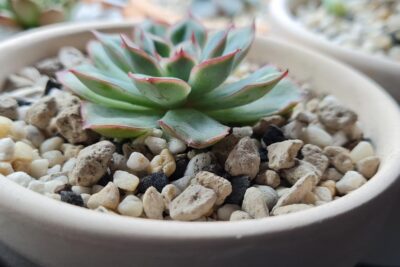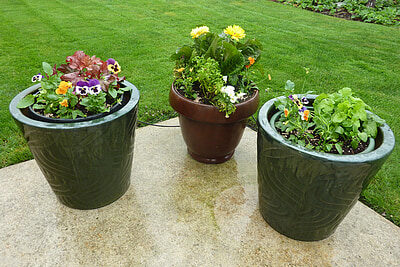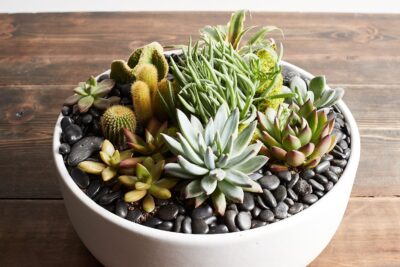
Best Succulent Ground Covers: Choosing the Perfect Garden Plants

Succulents have gained immense popularity in the gardening world due to their unique and striking appearance, as well as their ability to thrive in various climates and conditions. These low-maintenance plants are known for their fleshy leaves and stems, which store water and allow them to survive in arid environments. One of the popular ways to incorporate succulents into your garden is by using them as ground covers. Succulent ground covers not only add an interesting texture and color to your garden but also help in preventing weed growth and retaining moisture in the soil.
We will explore the world of succulent ground covers and guide you in choosing the perfect plants for your garden. We will discuss the various factors to consider when selecting succulent ground covers, such as their growth habits, hardiness, and maintenance requirements. Additionally, we will provide a list of some of the best succulent ground covers available, along with their unique features and care tips. Whether you have a small backyard or a sprawling landscape, this article will help you create a stunning and sustainable garden using succulent ground covers.
- Choose low-growing succulent plants that spread out to create a ground cover
- Opt for varieties that are drought-tolerant and can withstand full sun exposure
- Look for succulents with interesting textures and colors to add visual interest to your garden
- Consider plants that are easy to care for and require minimal maintenance
- Select succulents that are suitable for your climate and growing conditions
- Check the soil requirements of each plant and make sure it is well-draining
- Plan your garden design by placing the succulent ground covers strategically to create a cohesive look
- Regularly prune and trim the plants to prevent them from overgrowing and becoming invasive
- Mulch the ground with rocks or gravel to help retain moisture and suppress weed growth
- Provide adequate water and fertilizer to promote healthy growth and vibrant colors
- Frequently Asked Questions
Choose low-growing succulent plants that spread out to create a ground cover
When it comes to creating a beautiful garden, choosing the right ground cover is essential. If you're looking for an option that is both low-maintenance and visually appealing, succulent ground covers are an excellent choice. These plants not only add a unique texture and color to your garden but also help to suppress weeds and retain moisture in the soil.
Why choose succulent ground covers?
Succulent ground covers are a popular choice among gardeners for several reasons. Firstly, their low-growing nature means that they spread out and cover a larger area, filling in gaps between other plants and creating a cohesive look. Secondly, succulents are known for their ability to store water in their leaves, making them drought-tolerant and perfect for hot and dry climates. Additionally, succulent ground covers require minimal maintenance, making them ideal for busy gardeners or those with limited gardening experience.
Factors to consider when choosing succulent ground covers
When selecting succulent ground covers for your garden, there are a few factors to keep in mind:
- Climate: Different succulent species have varying temperature and humidity requirements. It's important to choose varieties that are well-suited to your specific climate to ensure their success.
- Watering needs: While succulents are known for their water-storing abilities, it's still important to understand their watering needs. Some varieties prefer a drier soil, while others may require more frequent watering.
- Light requirements: Succulents thrive in bright, indirect light. Before selecting your ground covers, assess the sunlight conditions in your garden to ensure you choose plants that will receive adequate light.
- Growth habit: Consider the growth habit of the succulent species you're interested in. Some varieties spread rapidly, while others have a slower growth rate. Choose plants that will suit the size and layout of your garden.
Popular succulent ground covers to consider
Now that you have an understanding of what to look for when selecting succulent ground covers, here are a few popular options to consider:
 Hanging Succulents on Walls: Non-Damaging Techniques Guide
Hanging Succulents on Walls: Non-Damaging Techniques Guide- Sedum spurium (Dragon's Blood): This low-growing succulent features red-tinted leaves, providing a vibrant and eye-catching ground cover.
- Delosperma cooperi (Ice Plant): With its fleshy, purple-hued leaves and vibrant pink flowers, the Ice Plant is a stunning addition to any garden.
- Dymondia margaretae (Silver Carpet): This drought-tolerant ground cover features silver-gray foliage, creating a striking contrast in your garden.
- Sempervivum tectorum (Hens and Chicks): Known for its rosette-like growth habit, this succulent ground cover adds a unique and charming touch to any garden.
Remember, when selecting succulent ground covers, choose varieties that complement your existing plants and suit the overall aesthetic of your garden. With their low-maintenance requirements and stunning visual appeal, succulent ground covers are sure to enhance the beauty of your outdoor space.
Opt for varieties that are drought-tolerant and can withstand full sun exposure
When it comes to choosing ground covers for your garden, it's important to opt for varieties that are not only visually appealing but also able to thrive in challenging conditions. Succulent ground covers are an excellent choice as they are known for their ability to tolerate drought and withstand full sun exposure.
These low-maintenance plants have thick, fleshy leaves that store water, allowing them to survive in arid environments. Their unique textures and vibrant colors make them a popular choice for adding visual interest to your garden.
Benefits of using succulent ground covers:
- Drought-tolerant: Succulent ground covers have adapted to survive in dry conditions, making them an excellent choice for water-wise gardening.
- Low-maintenance: Once established, succulent ground covers require minimal care, saving you time and effort in the long run.
- Weed suppression: These plants create a dense ground cover, effectively suppressing the growth of weeds and reducing the need for herbicides.
- Soil erosion prevention: The extensive root systems of succulent ground covers help stabilize the soil, preventing erosion in sloped areas.
- Attractive appearance: With a wide range of shapes, colors, and textures to choose from, succulent ground covers can add beauty and visual interest to any garden.
Choosing the perfect succulent ground cover:
When selecting succulent ground covers for your garden, consider the following factors:
- Hardiness: Choose varieties that are suitable for your climate zone to ensure their survival throughout the year.
- Growth habit: Some succulent ground covers spread rapidly, while others stay compact. Consider the space available and how quickly you want the ground cover to fill in.
- Water needs: Although succulents are drought-tolerant, some varieties may require more water than others. Take into account your local rainfall patterns and the availability of irrigation in your garden.
- Color and texture: Succulent ground covers come in a wide range of colors, from vibrant greens to deep purples and even variegated patterns. Consider the overall aesthetic of your garden and choose plants that complement your existing landscape.
- Sun exposure: While most succulent ground covers can handle full sun, some varieties prefer partial shade. Assess the sunlight conditions in your garden and select plants accordingly.
By carefully considering these factors, you can choose the perfect succulent ground cover that will not only thrive in your garden but also enhance its overall beauty.
Remember, succulent ground covers are versatile and can be used in various garden settings, including rock gardens, containers, or as a border around other plants. With their resilience and striking appearance, they are an excellent addition to any garden.
 Surprise Mom with Stunning Succulents: The Perfect Mother's Day Gift
Surprise Mom with Stunning Succulents: The Perfect Mother's Day GiftLook for succulents with interesting textures and colors to add visual interest to your garden
When it comes to choosing ground covers for your garden, succulents are an excellent choice. Not only are they low-maintenance and drought-tolerant, but they also come in a variety of interesting textures and colors that can add a unique touch to your outdoor space.
One of the key advantages of using succulents as ground covers is their ability to thrive in various soil conditions. Whether you have sandy or clay soil, succulents can adapt and flourish. Their shallow root systems help prevent erosion, making them an ideal choice for sloped areas or garden beds.
When selecting succulent ground covers, it's essential to consider their textures and colors. Succulents come in a wide range of leaf shapes and sizes, offering an array of interesting textures. Some have smooth, glossy leaves, while others display spiky or fuzzy textures. By mixing and matching different textures, you can create a visually appealing and dynamic garden.
Additionally, succulents offer a diverse palette of colors to choose from. You can find varieties with vibrant greens, dusty blues, deep purples, and even fiery reds. By carefully selecting a combination of succulents with complementary or contrasting colors, you can create a stunning visual display that adds depth and interest to your garden.
Consider these popular succulent ground covers:
- Stonecrop (Sedum spp.): With their fleshy leaves and star-shaped flowers, stonecrops are a popular choice for ground covers. They come in various colors, from pale green to rich burgundy, and are known for their ability to spread and fill in spaces quickly.
- Hens and Chicks (Sempervivum spp.): Hens and Chicks are charming succulents that form rosette-shaped clusters. They come in a range of colors and are known for their ability to withstand harsh conditions, making them an excellent choice for rock gardens.
- Ice Plant (Delosperma spp.): Ice plants feature vibrant, daisy-like flowers that create a carpet of color. They are drought-tolerant and thrive in sunny locations, making them perfect for adding a pop of color to your garden.
- Blue Chalksticks (Senecio serpens): With their unique blue-gray color and cylindrical leaves, blue chalksticks add a striking element to any garden. They are drought-tolerant and can be used as ground covers or in containers.
Remember to consider the specific requirements of each succulent ground cover before planting them. Some prefer full sun, while others thrive in partial shade. By selecting the right succulents for your garden's conditions, you can enjoy a beautiful and low-maintenance ground cover that will enhance the overall aesthetic of your outdoor space.
Consider plants that are easy to care for and require minimal maintenance
 Sending Succulents: The Perfect Gift for Plant Lovers
Sending Succulents: The Perfect Gift for Plant LoversWhen selecting ground covers for your garden, it's important to choose plants that are easy to care for and require minimal maintenance. Succulents are an excellent choice in this regard as they are known for their ability to thrive with little attention.
One of the key advantages of succulent ground covers is their ability to store water in their leaves, stems, or roots. This allows them to withstand drought conditions and makes them highly resilient. Additionally, succulents have shallow root systems, making them less invasive and easier to control compared to other ground cover options.
Another benefit of succulent ground covers is their versatility. With a wide variety of colors, shapes, and textures available, you can create visually appealing landscapes that suit your personal style. Whether you prefer the vibrant hues of Sedum spurium 'Dragon's Blood' or the delicate rosettes of Sempervivum tectorum, there is a succulent ground cover to suit every taste.
Factors to consider when choosing succulent ground covers
- Sunlight: Different succulent species have varying sunlight requirements. Some prefer full sun, while others thrive in partial shade. Consider the amount of sunlight your garden receives and choose succulent ground covers accordingly.
- Watering needs: While succulents are known for their ability to withstand drought, it's important to understand each species' specific watering needs. Some succulents prefer infrequent watering, while others require more regular moisture.
- Climate: Succulents have different temperature tolerances, so it's essential to select ground covers that are well-suited to your climate. Some succulents thrive in hot, arid climates, while others prefer cooler temperatures.
- Growth habit: Consider the growth habit of the succulent ground covers you're considering. Some spread quickly and can be used to fill large spaces, while others have a more clumping habit and are better suited for smaller areas.
By considering these factors, you can choose the perfect succulent ground covers for your garden. Remember, the key is to select plants that are low-maintenance, visually appealing, and suited to the specific conditions of your garden. With their ability to flourish with minimal care, succulent ground covers are an excellent choice for any gardener.
So, why not add some succulent ground covers to your garden today and enjoy their beauty for years to come?
Select succulents that are suitable for your climate and growing conditions
When it comes to choosing the perfect succulent ground covers for your garden, it is essential to consider the climate and growing conditions in your area. Succulents are known for their ability to thrive in various environments, but selecting the right ones will ensure their long-term success.
Firstly, consider the climate of your region. Some succulents are more tolerant of extreme temperatures, while others prefer milder conditions. If you live in a hot and arid climate, opt for succulents like Sedum, Agave, or Echeveria, which are well-suited to drought-like conditions. On the other hand, if you reside in a cooler climate, look for varieties such as Sempervivum or Delosperma, which can withstand lower temperatures.
 Find the Best East Side Succulent Shops for All Your Plant Needs!
Find the Best East Side Succulent Shops for All Your Plant Needs!Next, assess the growing conditions in your garden. Take note of the amount of sunlight your chosen area receives throughout the day. Succulents generally thrive in full sun, but some can tolerate partial shade. For areas with limited sunlight, consider planting species like Haworthia or Gasteria, which can handle shadier conditions.
Soil type is another crucial factor to consider. Succulents require well-draining soil to prevent root rot. If your soil is heavy and clay-like, it is recommended to amend it with sand or perlite to improve drainage. However, if your garden already has sandy or rocky soil, you may not need to make any adjustments. Check the specific soil requirements for each succulent variety you are considering to ensure they will be compatible with your garden's soil type.
Lastly, consider the overall maintenance requirements of the succulents you choose. Some varieties are low-maintenance and require minimal watering and pruning, while others may need more attention. If you have a busy lifestyle or prefer a hands-off approach, opt for low-maintenance options like Sedum or Portulaca. However, if you enjoy spending time in your garden and don't mind a bit more upkeep, you can explore more high-maintenance options like Aeonium or Crassula.
By carefully considering your climate, growing conditions, soil type, and maintenance preferences, you can select the perfect succulent ground covers for your garden. Not only will they add beauty and texture to your landscape, but they will also thrive and bring joy for years to come.
Check the soil requirements of each plant and make sure it is well-draining
One important factor to consider when choosing succulent ground covers for your garden is the soil requirements of each plant. Succulents thrive in well-draining soil, so it is crucial to ensure that the ground cover you select can withstand these conditions.
To determine if the soil is well-draining, you can perform a simple test. Dig a hole approximately 1 foot deep and fill it with water. If the water drains completely within 12 hours, then the soil has good drainage. However, if the water remains in the hole for an extended period, it indicates poor drainage, which can be detrimental to the health of the succulents.
 Discover the Best Online Shops for Succulents in a Box
Discover the Best Online Shops for Succulents in a BoxWhen browsing through different ground cover options, make sure to read the plant's description and check if it requires well-draining soil. This information is usually provided by nurseries or online retailers. Alternatively, you can consult gardening books or websites for specific soil requirements of various succulent ground covers.
Plan your garden design by placing the succulent ground covers strategically to create a cohesive look
When it comes to designing your garden, selecting the right plants is crucial. For a stunning and low-maintenance garden, consider incorporating succulent ground covers. These plants not only provide an attractive aesthetic but also offer numerous benefits such as water conservation, soil erosion prevention, and weed suppression.
To ensure a cohesive look, it is essential to plan the placement of your succulent ground covers strategically. By carefully selecting and arranging the plants, you can create an eye-catching display that will enhance the overall appeal of your garden.
Consider the following factors when choosing the perfect succulent ground covers:
- Climate: Succulents thrive in different climates, so it is important to choose varieties that are well-suited to your particular region. Consider the amount of sunlight, temperature range, and rainfall in your area to ensure the plants will thrive.
- Soil type: Succulents require well-draining soil to prevent root rot. Assess your garden's soil composition and choose ground covers that can adapt to sandy, loamy, or clay soils. Additionally, amending the soil with organic matter can improve drainage and provide optimal conditions for growth.
- Growth habit: Some succulent ground covers spread horizontally, while others grow in clumps or mound-like formations. Consider the available space in your garden and choose plants that will complement the overall design. Additionally, take into account the growth rate of each species to ensure they won't overcrowd or overshadow other plants.
- Color and texture: Succulents come in a variety of colors, shapes, and textures. Take advantage of this diversity to create visual interest and contrast in your garden. Consider pairing different shades and textures to create a captivating tapestry of foliage.
- Maintenance: Succulent ground covers are known for their low maintenance requirements. However, some varieties may need occasional pruning or extra care. Consider your available time and commitment to gardening tasks when selecting the perfect plants for your garden.
By carefully considering these factors, you can choose the perfect succulent ground covers that will not only thrive in your garden but also create a cohesive and visually appealing design. Remember to plan and arrange your plants strategically to maximize the impact of their colors, textures, and growth habits.
Regularly prune and trim the plants to prevent them from overgrowing and becoming invasive
Succulent ground covers are a popular choice for gardeners looking to add beauty and functionality to their outdoor spaces. These plants not only provide a lush carpet of foliage but also offer numerous benefits such as erosion control, weed suppression, and water conservation. However, it is important to keep in mind that these ground covers can sometimes become overgrown and invasive if not properly maintained.
 Getting Started with DIY Succulent Planting: Getting Dirty!
Getting Started with DIY Succulent Planting: Getting Dirty!To ensure that your succulent ground covers stay in control and maintain their aesthetic appeal, regular pruning and trimming are essential. By using the right techniques and tools, you can keep these plants in check while promoting healthy growth and preventing them from taking over your garden.
Why is pruning important?
Pruning is an important practice for succulent ground covers because it helps maintain their shape and size. Over time, these plants can spread and become unruly, potentially overshadowing other plants in your garden. By pruning regularly, you can keep them compact and prevent them from encroaching on neighboring plants.
Additionally, pruning promotes airflow and sunlight penetration, which are crucial for the overall health of your succulent ground covers. Proper air circulation helps prevent the development of fungal diseases and keeps the foliage dry, reducing the risk of rot or other moisture-related issues.
When should you prune?
The best time to prune succulent ground covers is during their active growth period, typically in spring or early summer. This is when the plants are actively producing new leaves and stems. Avoid pruning during the dormant season, as it may hinder their growth and recovery.
It is also important to consider the specific growth habits of your chosen succulent ground covers. Some plants may require more frequent pruning to maintain their desired shape, while others may be more low-maintenance. Research the specific care guidelines for each plant to determine the best pruning schedule.
How to prune succulent ground covers
Before you start pruning, make sure you have the right tools for the job. Sharp and clean pruning shears or scissors will help ensure clean cuts and minimize the risk of introducing diseases. It is also advisable to wear gloves to protect your hands from thorns or spines.
- Identify the areas that need pruning. Look for overgrown branches, dead or damaged foliage, or any signs of disease.
- Start by removing any dead or yellowing leaves at the base of the plant. Gently pull them away or use clean scissors to make clean cuts.
- Trim back any long or leggy branches to promote a more compact and bushy growth habit. Cut just above a leaf node or joint to encourage new growth.
- If you notice any diseased or pest-infested areas, make sure to remove them completely to prevent further spread.
- After pruning, clean your tools with a disinfectant to avoid transferring any diseases to other plants.
Remember to always step back and assess the overall appearance of your succulent ground covers after each pruning session. This will help you ensure a balanced and aesthetically pleasing result.
 Top-Rated Long Succulent Planters: Discover the Best Deals
Top-Rated Long Succulent Planters: Discover the Best DealsBy regularly pruning and trimming your succulent ground covers, you can enjoy their beauty and benefits without the worry of them becoming invasive or overgrown. Take the time to care for these plants, and they will reward you with a stunning ground cover that enhances your garden's appeal.
Mulch the ground with rocks or gravel to help retain moisture and suppress weed growth
When it comes to creating a beautiful and low-maintenance garden, succulent ground covers are an excellent choice. These plants not only provide an attractive and vibrant addition to your outdoor space but also offer a practical solution for covering bare ground. One of the most effective ways to enhance the growth and health of your succulent ground covers is by mulching the ground with rocks or gravel.
Mulching with rocks or gravel serves two main purposes: moisture retention and weed suppression. Succulents thrive in well-draining soil, and the use of rocks or gravel as mulch helps prevent excess moisture from accumulating around the plants' roots. This allows the succulents to grow in an environment that mimics their natural habitat, preventing issues such as root rot.
Additionally, rocks or gravel act as a barrier against weed growth. By covering the ground with a layer of these materials, you create a physical barrier that prevents weed seeds from germinating and competing with your succulent ground covers for nutrients and space. This not only reduces the amount of time and effort spent on weeding but also helps maintain the overall aesthetic appeal of your garden.
When choosing rocks or gravel for mulching, consider the size and color that will best complement your succulent ground covers. Larger rocks can create a striking visual contrast, while smaller gravel allows for a more uniform and subtle appearance. Additionally, selecting rocks or gravel in colors that complement the foliage of your succulents can enhance the overall visual appeal of your garden.
Benefits of Mulching with Rocks or Gravel for Succulent Ground Covers:
- Moisture Retention: Mulching with rocks or gravel helps retain moisture around the roots of succulent ground covers, promoting their healthy growth.
- Weed Suppression: A layer of rocks or gravel acts as a physical barrier, preventing weed seeds from germinating and competing with your succulents for nutrients and space.
- Aesthetic Appeal: Choosing rocks or gravel that complement the color and texture of your succulent ground covers can enhance the overall visual appeal of your garden.
- Low-Maintenance: Once mulched, succulent ground covers require less maintenance, as the rocks or gravel help regulate soil moisture and minimize weed growth.
By mulching the ground with rocks or gravel, you create an ideal environment for your succulent ground covers to thrive. Not only do you provide them with the necessary conditions for growth, but you also enhance the overall beauty and functionality of your garden. So, consider incorporating this simple yet effective technique into your gardening routine to enjoy the benefits of vibrant and low-maintenance succulent ground covers.
 Where to Find Succulents for Sale in San Diego: Your Ultimate Guide
Where to Find Succulents for Sale in San Diego: Your Ultimate GuideProvide adequate water and fertilizer to promote healthy growth and vibrant colors
Water and fertilizer are essential for the optimal growth and development of succulent ground covers. These plants thrive in arid conditions, but it is important to provide them with adequate hydration to keep them healthy and vibrant.
When it comes to watering succulent ground covers, it is crucial to strike a balance. Overwatering can lead to root rot and other fungal diseases, while underwatering can cause the plants to become dehydrated and unhealthy. The key is to water them deeply but infrequently, allowing the soil to dry out completely before the next watering session.
In terms of fertilizing succulent ground covers, a balanced and diluted fertilizer is ideal. They do not require heavy feeding like other garden plants. A slow-release fertilizer or a diluted liquid fertilizer can be applied during the growing season to provide the necessary nutrients without overwhelming the plants.
It is important to note that different succulent ground covers may have varying water and fertilizer requirements. Some varieties may require more frequent watering, while others may need less. It is always best to research and understand the specific needs of the succulent ground covers you have in your garden.
Lastly, it is worth mentioning that succulent ground covers are generally low-maintenance plants. They have adapted to survive in harsh conditions and can withstand periods of drought. Therefore, it is advisable to err on the side of underwatering rather than overwatering to prevent any potential issues.
Frequently Asked Questions
1. What are succulent ground covers?
 Discover Unique and Trendy Succulent Pots for Your Plants
Discover Unique and Trendy Succulent Pots for Your PlantsSucculent ground covers are low-growing plants that spread and form a dense carpet-like cover on the ground. They are known for their fleshy leaves and ability to store water, making them ideal for arid or dry environments.
2. Why should I choose succulent ground covers for my garden?
Succulent ground covers offer several benefits, such as low maintenance, water efficiency, and erosion control. They also provide a unique and visually appealing look to your garden, with a wide variety of colors and textures to choose from.
3. What are some popular succulent ground cover options?
Some popular succulent ground cover options include Sedum spurium (Dragon's Blood), Delosperma cooperi (Ice Plant), and Sempervivum tectorum (Hens and Chicks). These plants are hardy, drought-tolerant, and can withstand various growing conditions.
4. How do I care for succulent ground covers?
To care for succulent ground covers, it is important to provide them with well-draining soil, sufficient sunlight, and occasional watering. Avoid overwatering, as succulents are prone to root rot. Regularly remove any dead or damaged foliage to maintain their overall health and appearance.
 Top Places to Find the Best Succulent Sellers in the USA
Top Places to Find the Best Succulent Sellers in the USAIf you want to read more articles similar to Best Succulent Ground Covers: Choosing the Perfect Garden Plants, you can visit the Planters and Arrangements category.






You Must Read